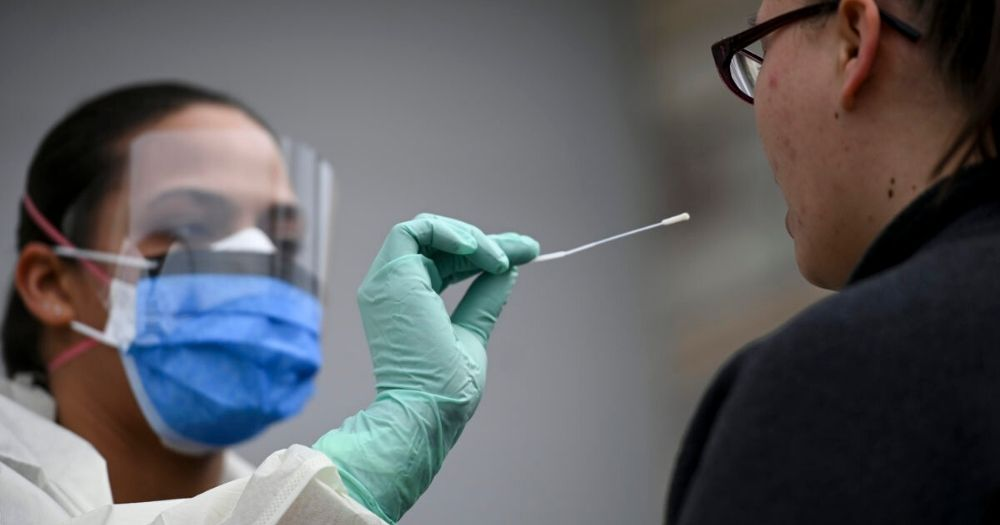The government has put in place targeted surveillance testing in the community, and is expanding its testing to more community groups to detect and ring-fence infections as early as possible to prevent further transmission.
Minister for Health Gan Kim Yong responded in a written answer on Friday (Sep. 4) to parliamentary questions from Workers' Party (WP) Members of Parliament (MP) Gerald Giam and Leon Perera about Covid-19 testing.
Testing strategy is to focus on active case finding
Gan explained that MOH's testing strategy is to focus on active case finding, as well as targeted surveillance on identified groups, in order to prevent further transmission.
He said that the majority of linked cases are detected through active case finding around confirmed cases, and laid out the steps for what happens:
First, after a case is detected, MOH quickly contact-traces all potential close contacts and places them under quarantine.
As part of the quarantine process, every person who is quarantined is subjected to a swab polymerase chain reaction (PCR) test for Covid-19 at the start and end of the quarantine period.
The swab test at the start allows MOH to quickly identify people under quarantine who are infected, provide the appropriate medical support, and expand the ring-fence of close contacts if necessary.
The swab PCR test at the end helps pick up any remaining cases who could have been incubating the virus at the start of his quarantine, and gives MOH additional assurance that the person is not infectious before being released from quarantine.
If the quarantined person presents with symptoms during quarantine, they are immediately tested for Covid-19.
Select testing of higher risk of transmission groups
MOH has also conducted special operations to test selected groups of individuals that have a higher risk of Covid-19 transmission.
Examples that Gan raised include the testing of identified households and their visitors at Block 111 Tampines Street 11, where nine confirmed Covid-19 cases were found in one HDB block of flats in July, and the testing of bus drivers and staff working in public bus depots and interchanges.
"While the individuals tested were not close contacts of the confirmed cases, targeted deployment of such special testing operations allows earlier detection of any underlying cases among the group even if they are asymptomatic," said Gan.
Expanding testing to more community groups
As the country opens its economy and resumes social activities, MOH will be expanding testing to more community groups.
MOH has started by identifying community groups such as taxi and Private Hire Car drivers, food delivery personnel, key vendors servicing foreign worker dormitories, and stallholders at selected hawker centres, markets and F&B establishments such as coffeeshops.
"While there has been no local evidence that these community groups are of higher risks of getting infected," Gan said, "MOH will be offering tests to them as part of our expanded testing and surveillance efforts given the nature of their working environment, such as the high frequency of interactions with members of public."
These tests are one-time operations, and are meant to provide a better of idea of the prevalence of Covid-19 amongst the population.
Individuals diagnosed with ARI
PCR testing is provided for all individuals aged 13 and above who are diagnosed with ARI at first presentation to a doctor.
Between Jul. 1 and Aug. 16 of this year, 76 per cent of patients aged 13 and older diagnosed with ARI at the polyclinics and Public Health Preparedness Clinics (PHPCs) were PCR tested for Covid-19.
Of these, 0.03 per cent tested positive, which Gan said indicates that the community prevalence of Covid-19 is low.
In addition, he added that as Singapore re-opens its borders and facilitates travel, MOH is also testing incoming travellers either on-arrival or during their Stay-Home Notice (SHN) period, to detect cases and reduce onward community transmission.
More vulnerable groups or those with a higher risk of Covid-19 exposure
Gan stated that surveillance testing is also done for identified groups who are more vulnerable or have higher risk of exposure to Covid-19.
This surveillance testing includes the rostered routine testing (RRT) for groups such as individuals living in the migrant worker dormitories, those who returned to work in the construction, marine and process sectors, and workers supporting frontline Covid-19 operations.
Currently, Gan said, over 200,000 such individuals are tested every two weeks. In the last two-week cycle, about 200 of such people tested positive for Covid-19, and the majority of these cases were likely to have been past infections.
Lead time between swab test and test results
Responding to Perera's question about the current mean and median lead time between when swab testing is conducted and when the results of the test are made available to relevant parties, Gan said that agencies and private providers supporting the testing operations endeavour to turn-around the test results "as soon as possible".
He stated that the current mean and median lead time between conducting the swab test and when the test results are made available from the laboratories are 30 hours and 22 hours respectively.
"Confirmed cases will be notified by the relevant parties expediently for the necessary public health actions to be taken," he added.
Totally unrelated but follow and listen to our podcast here
Top photo via Aaron Lavinsky/Star Tribune via Getty Images.
If you like what you read, follow us on Facebook, Instagram, Twitter and Telegram to get the latest updates.
